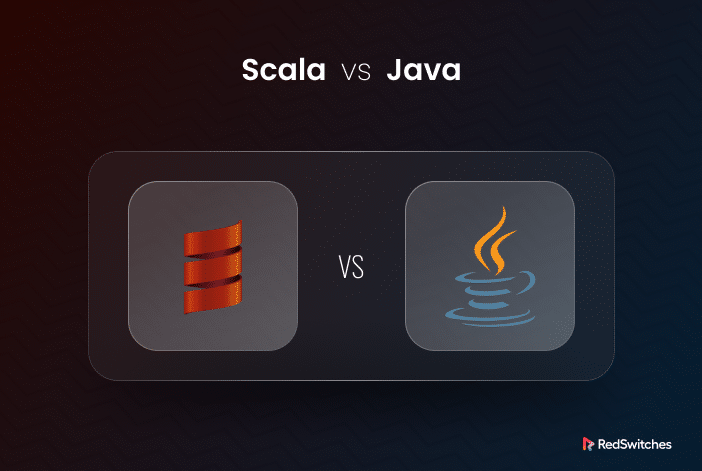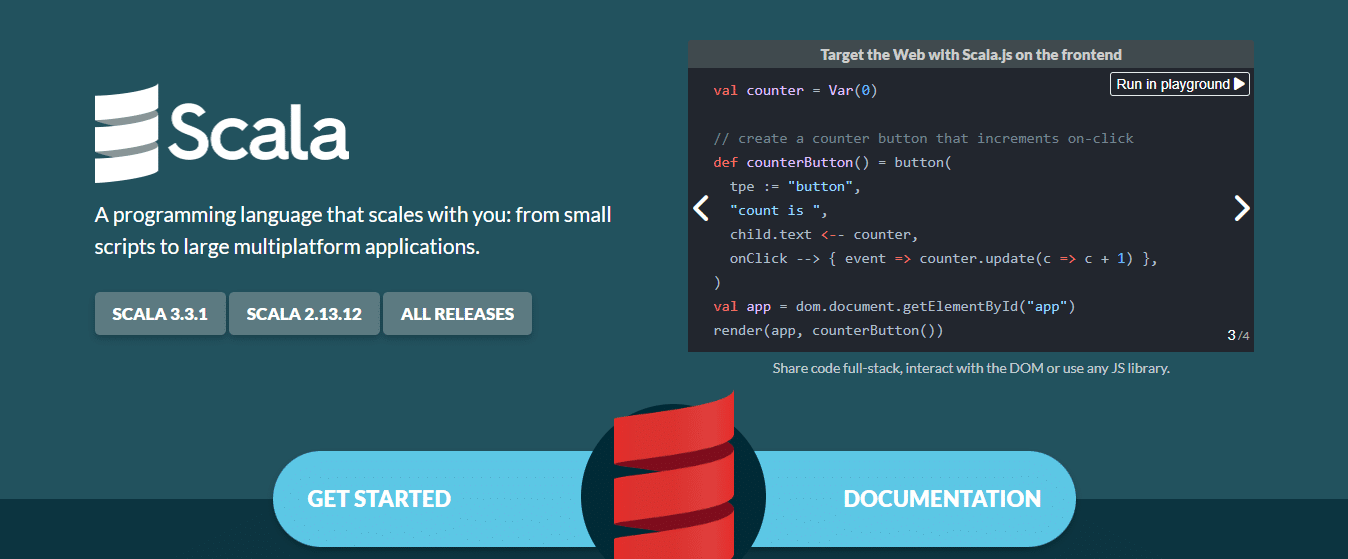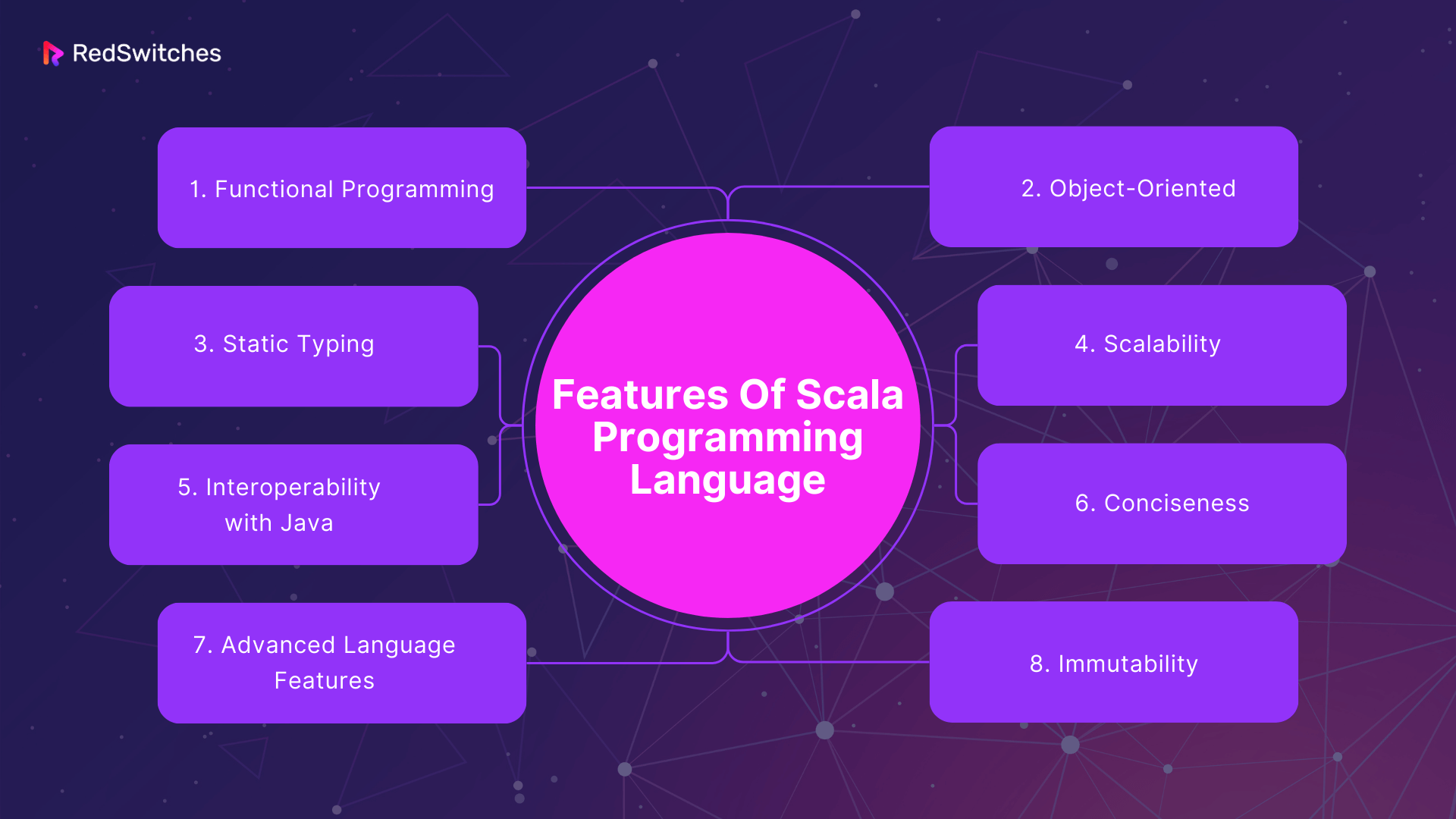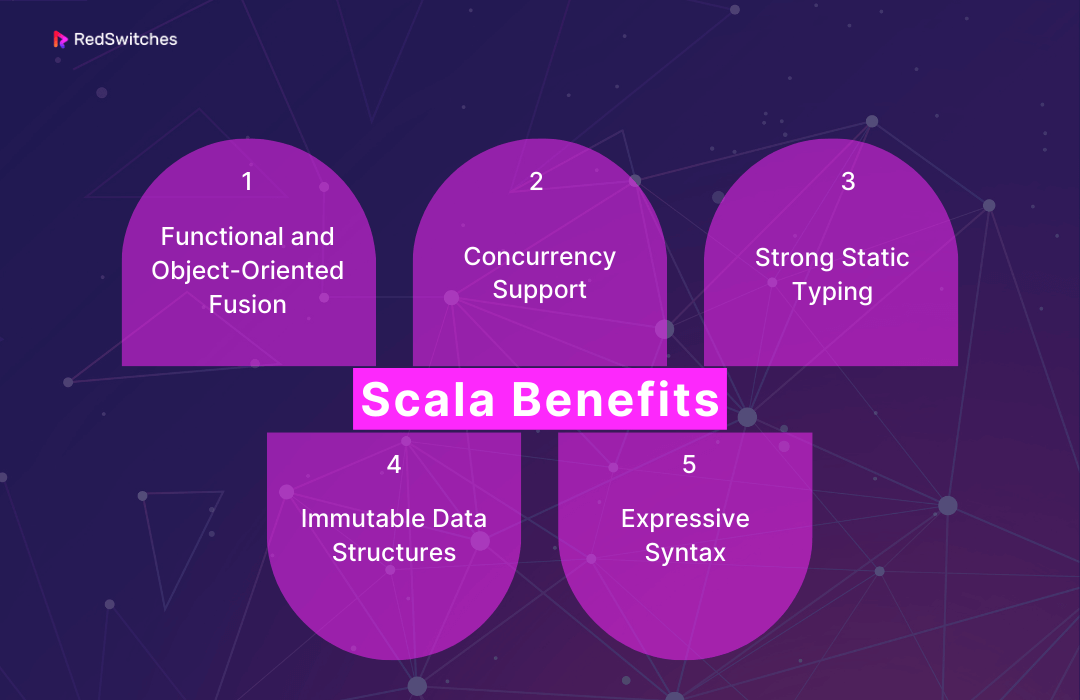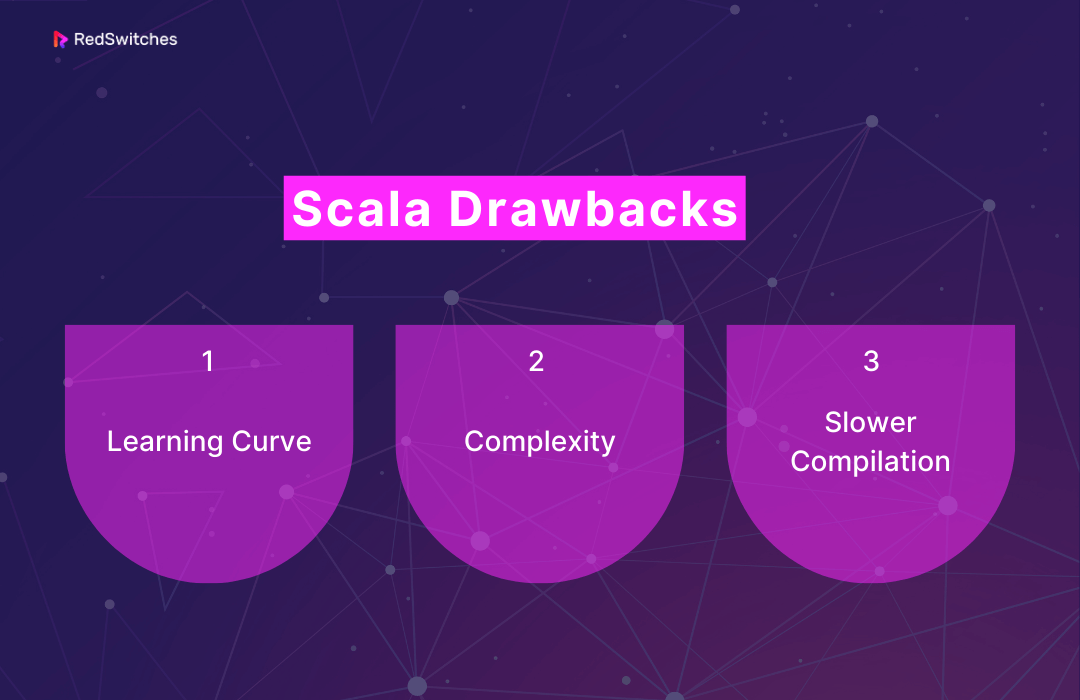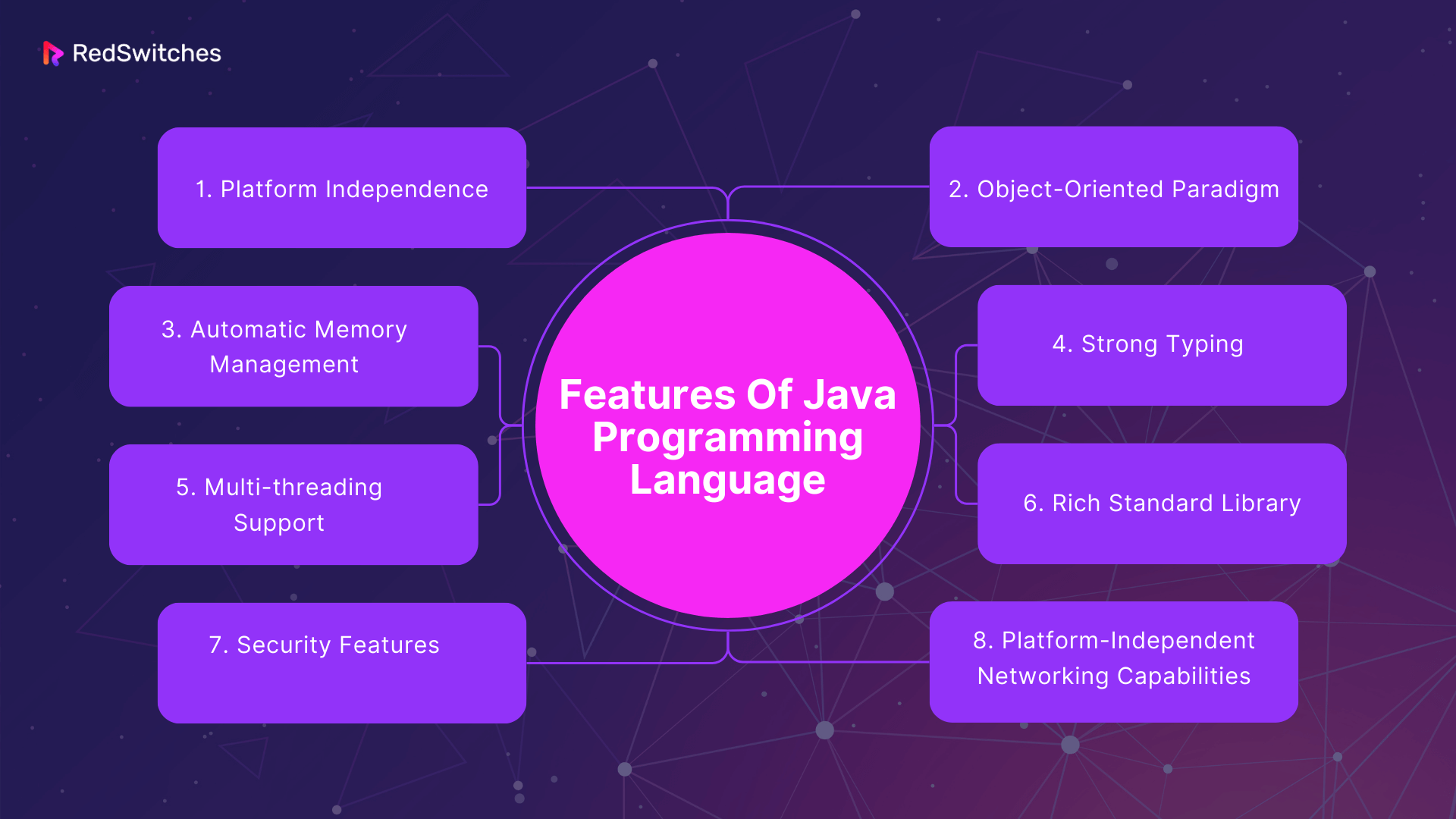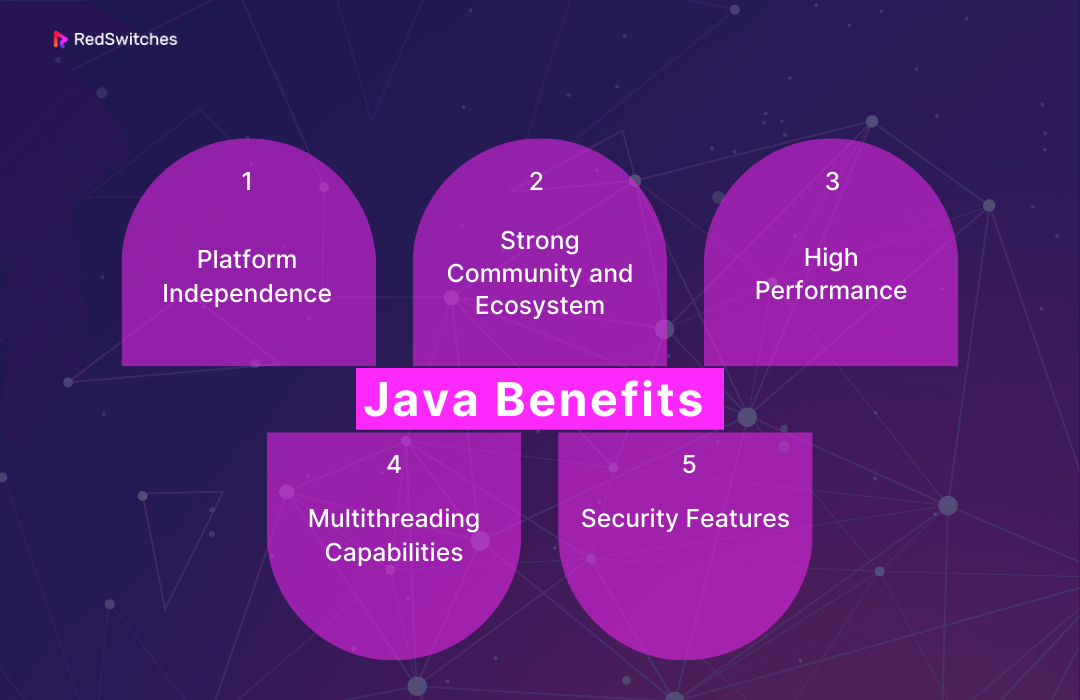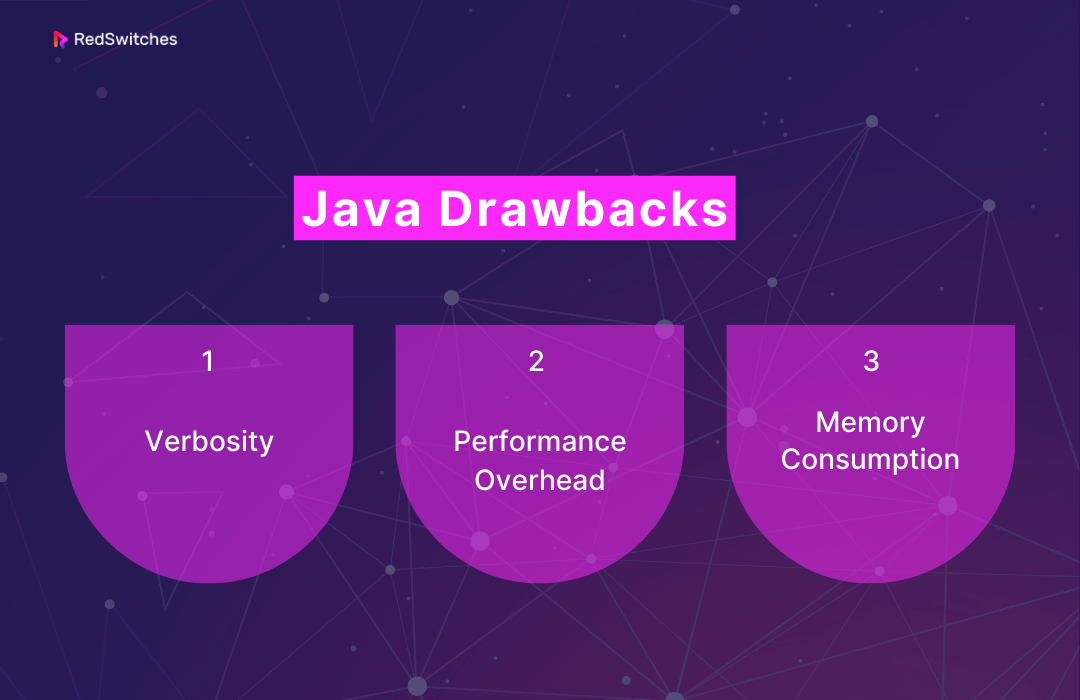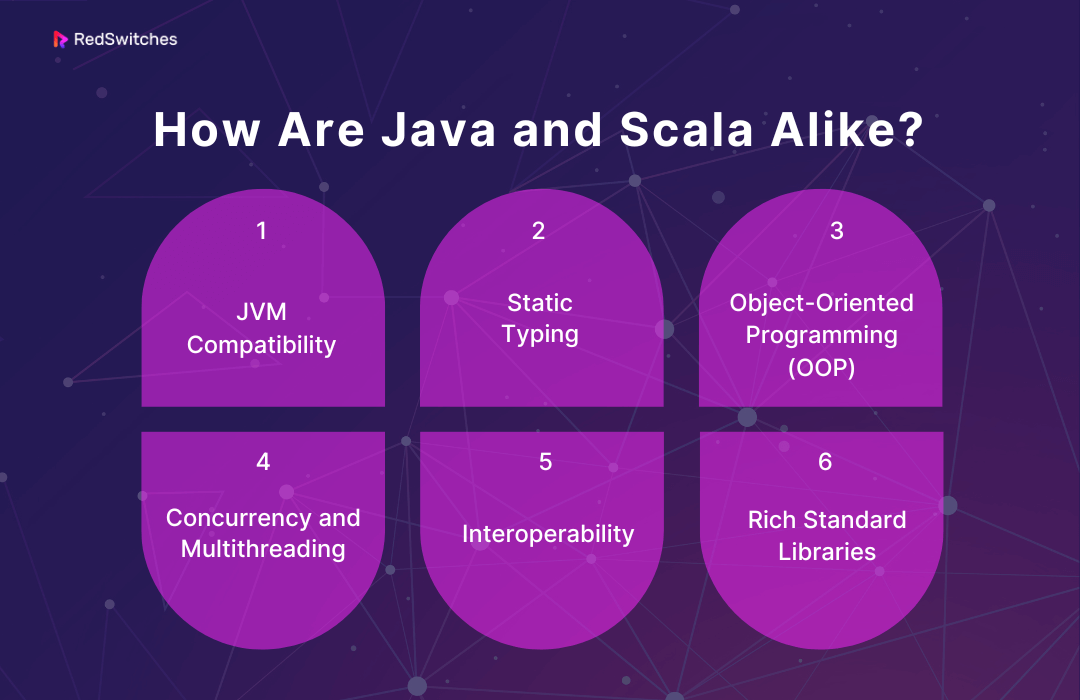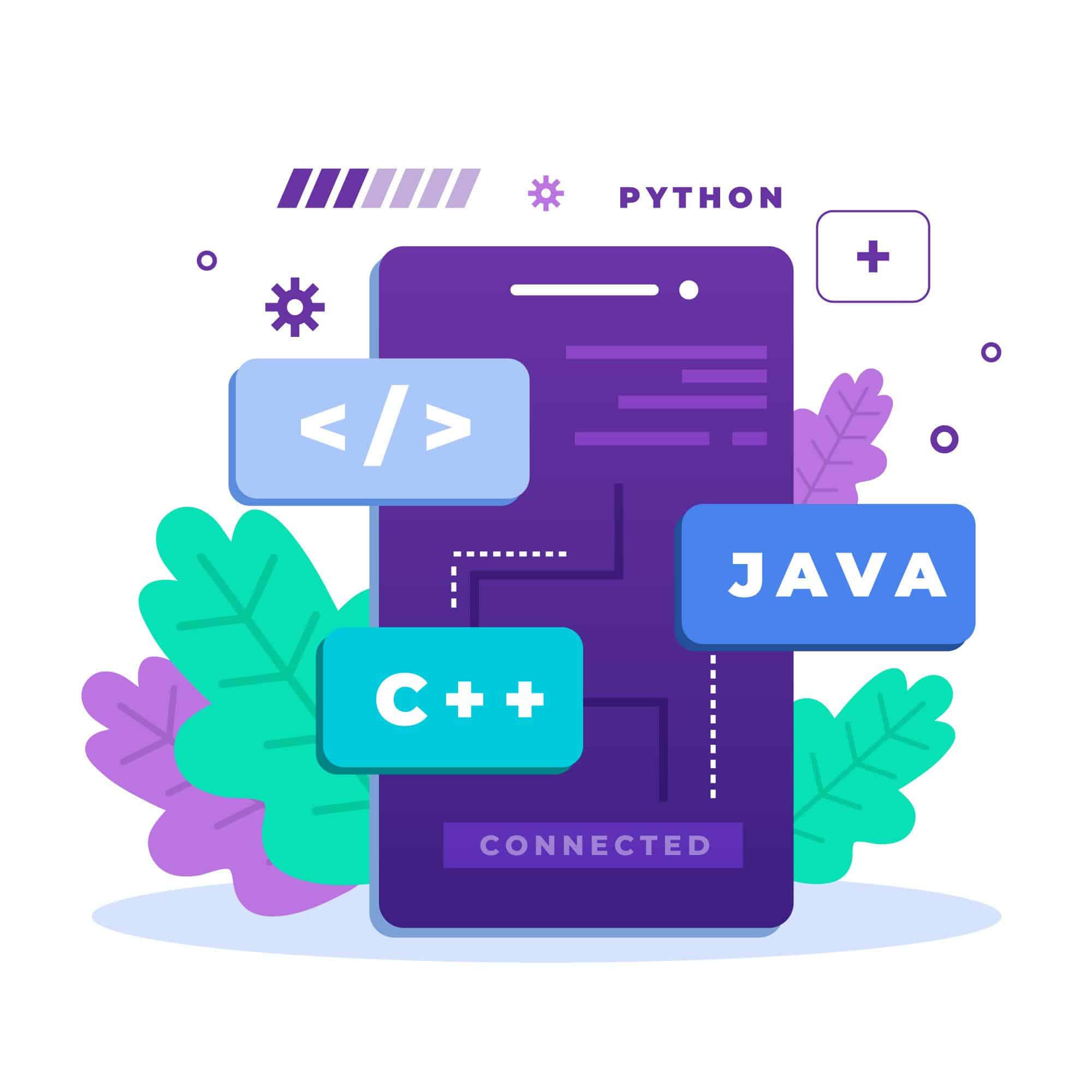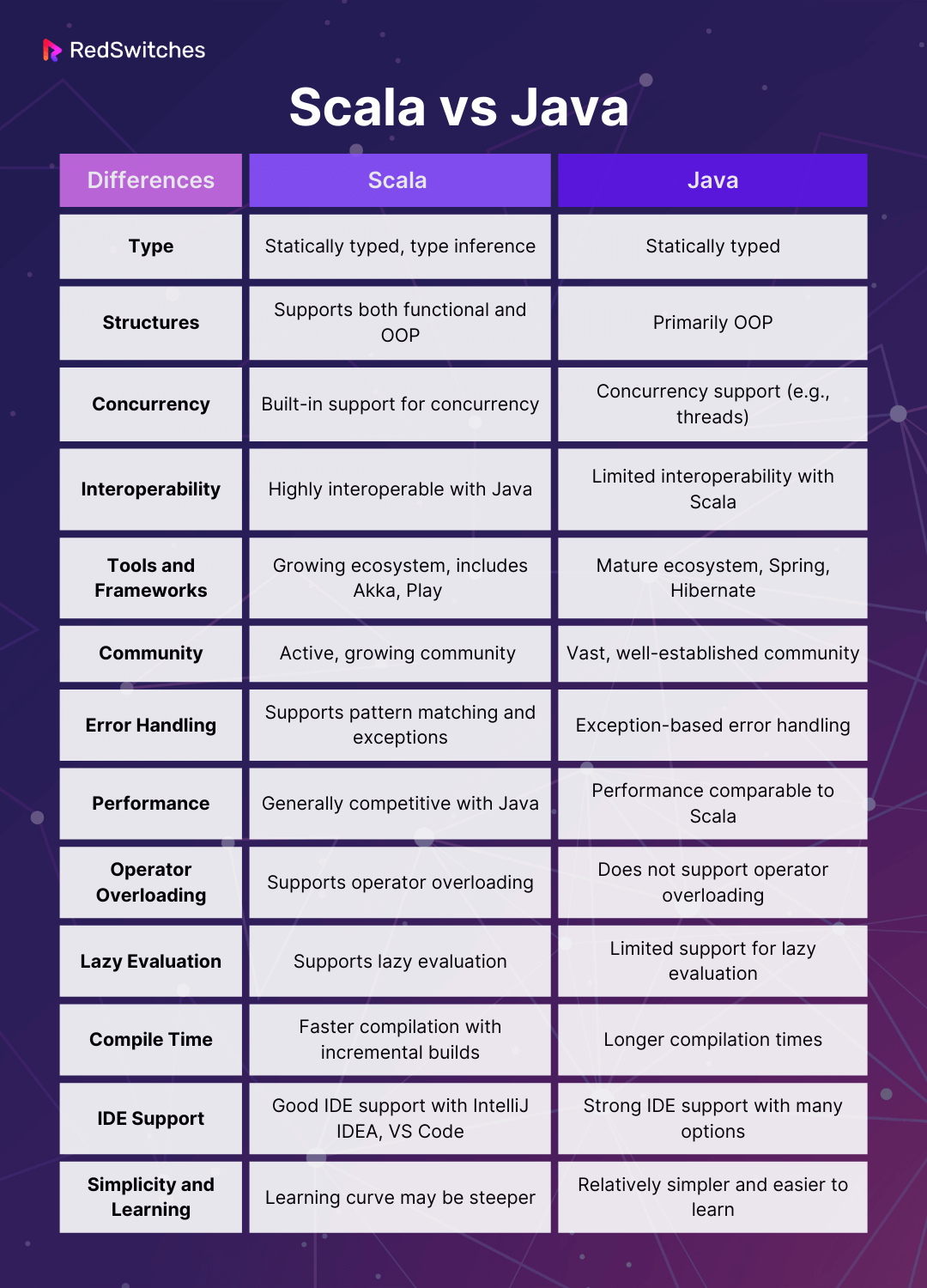When it comes to programming languages, Scala and Java are two heavyweights that have left an indelible mark on the software development landscape. According to Statista’s list of the most sought-after programming languages among developers worldwide as of 2023, Java ranks 7th, with 30.55% of respondents stating that they use it. In contrast, Scala ranks 27th, with 2.77% of respondents claiming they use it.
Although Java may rank significantly higher in this list, Scala may be a better fit for some software developers. Both frameworks have their unique features, advantages, and drawbacks, etc.
This comprehensive comparison explores the top 13 differences between Scala vs Java. It explores the different nuances of these languages, from their core features and benefits to their drawbacks and how they handle critical aspects like concurrency and error handling.
Table of Contents
- What is Scala?
- What is Java?
- How Are Java and Scala Alike?
- Differences between Scala and Java
- Scala vs Java: What To Choose And When?
- Conclusion – Scala vs Java
- FAQs
What is Scala?
Credits: Scala Website
Before we explore the differences between Scala vs Java, it is important to look at their individual definitions.
Scala is a powerful, versatile programming language that blends functional and object-oriented programming paradigms. It was created to address many limitations and complexities in other programming languages like Java. Scala’s name is a portmanteau of ‘scalable’ and ‘language,’ highlighting its ability to adapt and scale for various applications.
With concise syntax, a robust type system, and support for both functional and imperative coding styles, Scala has gained popularity in various domains, including web development, data analysis, and distributed computing. It also runs on the Java Virtual Machine (JVM), making it compatible with existing Java libraries and frameworks.
Features Of Scala Programming Language
Functional Programming
Scala’s approach to functional programming is more than an add-on. It is a deeply integrated part of the language. This paradigm encourages developers to write more predictable and accessible test code. Features like first-class functions mean functions can be passed around as values, enabling higher-order functions to accept other functions as parameters or return them as results.
Object-Oriented
In Scala, the object-oriented paradigm is taken to its logical extreme, with every value being an object and every operation being a method call. This pure object-oriented approach means that primitives and functions are also objects, ensuring consistency and flexibility in how different entities are treated within the language.
Scala’s class and trait system facilitates rich inheritance hierarchies, promoting code reuse and extensibility. Traits in Scala, akin to interfaces with concrete implementation in other languages, allow for elegant mix-in composition.
Static Typing
Scala’s static typing system is powerful and expressive. It ensures type safety at compile-time while avoiding verbosity through type inference, where the compiler can often automatically deduce the type of a variable or expression.
This feature reduces the need for explicit type annotations, leading to cleaner and more readable code. Static typing also aids in performance optimization, as the compiler can make certain decisions at compile time.
Scalability
The name ‘Scala’ highlights its design philosophy – a scalable language that can adapt to the needs of its users. Scala’s scalability is evident in its ability to efficiently handle everything from small scripts to complex, high-load systems.
Its functional programming capabilities offer immense benefits in concurrency and parallelism, which are crucial for modern, distributed applications and cloud-based services. The language’s design encourages writing concise yet expressive code that can be easily maintained and evolved, a crucial factor in building scalable systems.
Interoperability with Java
Scala’s stands out for its effortless interoperability with Java. It runs on the JVM and can seamlessly integrate with all Java libraries, frameworks, and tools. This interoperability allows Scala developers to tap into the vast ecosystem of Java libraries, leveraging existing codebases and frameworks.
It also means that Java developers can gradually adopt Scala in their projects, bringing in more expressive and concise Scala code while maintaining compatibility with their existing Java infrastructure.
Conciseness
Scala is renowned for its concise syntax. It allows developers to express complex ideas in fewer lines of code than languages like Java. This conciseness is not only about writing less code. It’s also about making the code more readable and reducing the cognitive load on developers.
Scala achieves this through features like case classes, specially designed for classes primarily used to hold data and with additional functionality. Its powerful pattern matching can replace verbose if-else chains and switch statements.
Advanced Language Features
Scala’s advanced features, like case classes and pattern matching, make it a powerful tool for developers. Case classes simplify the creation of data-carrying classes and automatically provide functionality like equality checks and value-based hash codes. Pattern matching in Scala is a powerful feature for decomposing and examining complex data structures.
Immutability
Immutability is a core concept in Scala, where objects are designed to be immutable by default. This means an object’s state cannot be changed once created. This approach has several advantages, especially in concurrent programming, where a mutable shared state is a common source of bugs.
By encouraging immutability, Scala reduces the risk of concurrency-related issues like race conditions and makes it easier to reason about code behavior.
Also Read: Install Java Ubuntu In Under 5 Minutes.
Scala Benefits
Functional and Object-Oriented Fusion
Scala’s most notable advantage is its seamless ability to combine functional and object-oriented programming paradigms. Developers can write concise and expressive code while maintaining compatibility with existing Java libraries. This fusion enhances code readability and maintainability, making building robust and scalable applications easier.
Concurrency Support
Scala provides powerful tools for concurrent programming, like actors and the Akka toolkit. These features simplify the development of highly concurrent and scalable applications, making Scala an ideal choice for projects that require efficient handling of multiple tasks and parallel processing.
Strong Static Typing
Scala boasts a strong, static type system that helps catch errors at compile time. This reduces the likelihood of runtime errors and improves code reliability, making Scala a robust choice for mission-critical applications where safety and predictability are paramount.
Immutable Data Structures
Immutable collections are a fundamental part of Scala. They promote safer and more predictable code by preventing accidental data modification. Immutable data structures lead to fewer bugs and more predictable behavior, enhancing the overall quality of your code.
Expressive Syntax
Scala’s concise and expressive syntax reduces boilerplate code. This not only makes the codebase more readable but also improves developer productivity. With Scala, you can achieve more with less code, saving time and effort during development and increasing the overall efficiency of your projects.
Scala Drawbacks
Learning Curve
Scala’s combination of functional and object-oriented concepts can be challenging for newcomers. Developers with a Java background may need time to grasp its unique features fully. While the learning curve can be steep, the rewards for code quality and expressiveness can be significant with patience and practice.
Complexity
While Scala’s expressiveness can reduce boilerplate code, it can also lead to complex and hard-to-read code if not used judiciously. Overuse of advanced features can make codebase maintenance difficult. It’s essential to strike a balance and follow best practices to ensure code clarity and simplicity.
Slower Compilation
Scala’s compilation process can be slower than other languages. This may affect development turnaround times, particularly for larger projects. While this issue can be mitigated with appropriate build tools and techniques, it’s a consideration for projects with tight deadlines.
What is Java?
Credits: Java Website
Java is a versatile and widely used programming language known for its platform independence and versatility. Java was first released in the mid-1990s by Sun Microsystems and has since become a prominent name in software development. Thanks to its ‘ Write Once, Run Anywhere ‘ philosophy, one of its defining features is the ability to write code once and run it on several platforms without modification.
This is achieved through the Java Virtual Machine (JVM), which interprets and executes Java bytecode. Java is commonly used to build many applications, from web and mobile applications to server-side software, enterprise-level applications, and embedded systems. Its syntax is known for its simplicity and readability, making it an attractive choice for beginners and experienced developers.
Are you interested in learning about programming languages? Read our informative languages blogs.
Features Of Java Programming Language
Platform Independence
Java programs are renowned for their ‘write once, run anywhere’ capability, made possible by their remarkable platform independence, enabled by the Java Virtual Machine. This unique characteristic allows developers to craft code that functions smoothly on diverse computing platforms, from Windows and macOS to Linux, without requiring extensive platform-specific modifications.
Object-Oriented Paradigm
Java stands out as a pure object-oriented language. Implementing classes and objects embraces the principles of modularity, reusability, and maintainability. This fundamental approach fosters structured and efficient software design, facilitating collaboration and the creation of robust, scalable applications.
Automatic Memory Management
Thanks to its automatic garbage collection mechanism, Java offers a significant advantage in memory management. This feature empowers developers to sidestep the pitfalls of memory leaks and eliminates the need for cumbersome manual memory management tasks, leading to more reliable and stable software.
Strong Typing
Java’s commitment to solid typing imposes strict type-checking during compilation, safeguarding against runtime errors and bolstering the codebase’s overall reliability. This stringent enforcement enhances code quality, minimizes the chances of unexpected runtime errors, and aids in the early detection of potential issues, streamlining the development process.
Multi-threading Support
Java distinguishes itself by smoothly integrating multi-threading support into its core functionality. With built-in capabilities for concurrent execution, developers can harness the power of multiple threads to optimize resource utilization and create responsive, parallelized applications.
Rich Standard Library
Java boasts an expansive, feature-rich standard library with various pre-built classes and APIs catering to diverse application needs. These resources facilitate tasks ranging from efficient data handling to sophisticated networking operations, accelerating development and reducing coding effort.
Security Features
Java prioritizes security, incorporating a robust suite of security features like a security manager and bytecode verification. These layers of protection make Java a preferred choice for crafting secure applications, safeguarding against unauthorized access and malicious code execution.
Platform-Independent Networking Capabilities
Java further extends its platform independence by equipping developers with comprehensive libraries tailored for network communication. This capability makes Java a go-to choice for building distributed and networked applications, as it ensures smooth interoperability across various environments and systems.
Credits: FreePik
Java Benefits
Platform Independence
Thanks to Java’s ‘write once, run anywhere’ capability, programs are compiled into an intermediate bytecode that can run on any platform with a Java Virtual Machine (JVM). This cross-platform compatibility ensures that Java applications can run effortlessly on Windows, macOS, Linux, and more without modification.
Strong Community and Ecosystem
Java boasts a wide developer community. This means access to countless libraries, frameworks, and tools that can accelerate development. Popular frameworks like Spring and Hibernate simplify building enterprise-level applications, while powerful IDEs like IntelliJ IDEA and Eclipse provide excellent development environments.
High Performance
Java’s performance has improved significantly over the years. The HotSpot JVM, for example, employs Just-In-Time (JIT) compilation to convert bytecode into machine code, optimizing execution speed. Java also offers multithreading support, making it suitable for concurrent and parallel programming, which is crucial for high-performance applications.
Multithreading Capabilities
Java excels in handling concurrent programming with its built-in support for multithreading. This allows developers to write applications that efficiently utilize multiple processors or cores, making Java suitable for scalable and performance-sensitive applications.
Security Features
Security is a top concern for software development. Java offers several security features, including a robust security manager and the ability to run applications in a sandboxed environment. This makes Java a preferred choice for building secure applications, especially in industries like finance and healthcare.
Java Drawbacks
Verbosity
One common criticism of Java is its verbosity. Compared to other languages, Java code can be more verbose, slowing development and leading to larger codebases. Tools and frameworks have emerged to mitigate this issue to some extent, such as Lombok, which simplifies boilerplate code.
Performance Overhead
Java’s focus on platform independence can result in a performance overhead compared to languages that compile directly to machine code. While modern JVMs have improved performance significantly, specific applications with stringent performance requirements may seek alternatives, like languages that offer more low-level control over system resources.
Memory Consumption
Due to the JVM’s memory management system, Java applications can consume substantial memory. While this isn’t a significant concern for most applications, it may be a consideration for resource-constrained environments or applications with strict memory limits. To mitigate this, developers can optimize memory usage through object pooling or selecting appropriate data structures.
Also Read: JDK vs JRE vs JVM: 5 Key Differences Of The Powerhouse Trio Behind Java.
How Are Java and Scala Alike?
JVM Compatibility
Perhaps the most fundamental similarity is that Java and Scala are designed to run on the Java Virtual Machine. This means that code written in both languages can seamlessly coexist within the same application. It also allows developers to leverage the vast ecosystem of libraries and tools available for the JVM, enabling them to harness the power of a mature and well-established runtime environment.
Static Typing
Java and Scala are statically typed languages, meaning variable types are determined at compile-time rather than runtime. This enhances code safety by catching type-related errors early in development, ultimately leading to more reliable and maintainable software.
Object-Oriented Programming (OOP)
Both languages embrace Object-Oriented Programming (OOP) principles. They support the creation of classes and objects, encapsulation, inheritance, and polymorphism. This common foundation makes transitioning from one language to another relatively straightforward for developers with OOP experience, promoting code consistency and reusability.
Concurrency and Multithreading
Java and Scala both provide features and libraries to support concurrency and multithreading. Java introduced the java.util. concurrent package and Scala offers its abstractions for managing concurrent tasks. Developers familiar with one language can apply their knowledge when working with threads and parallelism in the other, ensuring efficient utilization of system resources.
Interoperability
Scala is designed to be highly interoperable with Java. This means that Scala code can use existing Java libraries seamlessly, and Java code can call Scala code as if it were any other Java class. This interoperability is a significant advantage when migrating or extending existing Java applications, allowing developers to combine the strengths of both languages.
Rich Standard Libraries
Both languages have rich standard libraries that provide essential functionalities for various programming tasks. Whether you need to work with data structures, file I/O, networking, or web development, both Java and Scala offer comprehensive libraries to simplify the process, reducing the need to reinvent the wheel and speeding up development.
Credits: FreePik
Also Read Unraveling the Differences Between Minecraft Java vs Windows: A Detailed Guide.
Differences between Scala and Java
Below are the top 13 differences between Scala vs Java:
Type
Below is a comparison of the difference between Scala vs Java in terms of type:
Scala
Scala is known for its powerful and flexible type system. It combines object-oriented and functional programming paradigms, allowing developers to express complex ideas concisely. Scala’s type inference feature often means less boilerplate code when compared to Java, making code more expressive and readable.
Java
Java employs a strictly object-oriented type system. While recent versions have added some functional programming features, it relies heavily on traditional class hierarchies. This can lead to more verbose code in certain situations, especially when dealing with collections and data transformations.
Structures
Below is a comparison of the difference between Scala vs Java in terms of structures:
Scala
Scala’s syntax is concise and expressive, thanks to its functional programming features like pattern matching, higher-order functions, and immutability by default. These features make it well-suited for complex data transformations and modern coding practices.
Java
Java’s syntax is more verbose than Scala’s, especially when dealing with repetitive tasks. While Java’s syntax has improved over the years, it can still be less expressive than Scala, which might require writing more lines of code to achieve the same functionality.
Concurrency
Below is a comparison of the difference between Scala vs Java in terms of concurrency:
Scala
Scala shines in concurrency with its Actor model-based Akka library. Akka simplifies writing highly concurrent and distributed applications, making it an excellent choice for building scalable systems. Scala also offers lightweight threads through Futures and Promises, allowing developers to write asynchronous code effectively.
Java
Java provides concurrency support through the Java.util.concurrent package. While it offers robust tools for managing threads and parallelism, the model can be more complex and error-prone than Scala’s Actor model.
Interoperability
Below is a comparison of the difference between Scala vs Java in terms of interoperability:
Scala
One of Scala’s significant advantages is its seamless interoperability with Java. Scala code can use existing Java libraries and even extend Java classes. This makes it relatively painless to incorporate Scala into existing Java projects or leverage Java’s extensive ecosystem.
Java
Java, by nature, is highly interoperable with other Java code. Integrating Scala into Java projects is equally straightforward. Java and Scala classes can coexist within the same application, making it easy to transition between the two languages.
Tools and Frameworks
Below is a comparison of the difference between Scala vs Java in terms of tools and frameworks:
Scala
With its concise syntax and functional programming capabilities, Scala has a growing ecosystem of tools and frameworks. It offers powerful libraries like Akka for concurrent and distributed systems, Play Framework for web applications, and Apache Spark for big data processing. Scala’s compatibility with Java libraries extends its reach, giving developers access to many existing tools and frameworks.
Java
Java boasts a mature and extensive collection of tools and frameworks. It’s renowned for popular libraries like Spring for enterprise applications, Hibernate for database access, and Apache Maven for project management. Java’s well-established ecosystem has a tool or framework for virtually any use case, making it a top choice for many enterprises.
Credits: Scala Website
Community
Below is a comparison of the difference between Scala vs Java in terms of community:
Scala
Scala has a passionate and dynamic community that continues to grow. While smaller than Java’s community, it’s highly active and known for its enthusiasm for functional. programming. Scala’s community contributes to open-source projects, maintains libraries, and fosters innovation in various domains.
Java
Java’s community is known for its diversity and longstanding presence in the software development world. Its size and maturity ensure developers can find extensive support, resources, and knowledge. Java’s community is a cornerstone of its enduring popularity.
Error Handling
Below is a comparison of the difference between Scala vs Java in terms of error handling:
Scala
Scala offers robust error-handling mechanisms through features like pattern matching and the Option and Try types. It encourages functional programming principles, often leading to safer code and better handling of exceptions. Scala’s error handling emphasizes preventing errors at compile-time rather than runtime.
Java
Java relies on traditional try-catch blocks for error handling. While this approach is familiar and effective, it can lead to verbose code and potential runtime errors that may not be apparent until execution. Java’s error handling is more permissive, allowing unchecked exceptions to propagate through the code.
Performance
Below is a comparison of the difference between Scala vs Java in terms of performance:
Scala
Scala vs Java performance benchmark is relatively high. Scala’s performance is generally comparable to Java’s. While it introduces functional programming elements that can enhance code optimization, the final performance outcome largely depends on how effectively developers utilize Scala’s features.
Java
Java stands out for its performance, thanks to its mature optimization and efficient execution on the JVM. Java’s extensive runtime environment and Just-In-Time (JIT) compilation contribute to its reputation for delivering high-speed applications. It remains a top choice for performance-sensitive applications.
Operator Overloading
Below is a comparison of the difference between Scala vs Java regarding operator overloading:
Scala
One significant difference between Scala and Java is the support for operator overloading. Scala allows you to define custom meanings for operators like +, -, *, and others. This flexibility can lead to more expressive and concise code, enhancing code readability and maintainability. For example, you can define custom operators for complex number arithmetic or matrix manipulation.
Java
Java does not support operator overloading. In Java, operators have fixed meanings, and no built-in mechanism redefining their behavior exists. While this simplifies the language and avoids potential ambiguities, it can sometimes produce more verbose code for certain operations.
Lazy Evaluation
Below is a comparison of the difference between Scala vs Java in terms of lazy evaluation:
Scala
Scala offers lazy evaluation. This feature allows you to delay the execution of code until it’s needed. This can be particularly useful for optimizing performance and resource usage in scenarios where not all computations are necessary upfront. In Scala, you can use the lazy keyword to declare lazy values or use functions like map and filter with collections to perform lazy transformations.
Java
Java does not support lazy evaluation by default. Computations in Java are typically executed eagerly, which means that all operations are performed immediately when called. While this approach simplifies understanding of program flow, it may sometimes lead to unnecessary resource consumption.
Compile Time
Below is a comparison of the difference between Scala vs Java in terms of compile time:
Scala
Scala has a more expressive and concise syntax than Java. This can come at the cost of longer compilation times, especially for large codebases or complex type inference scenarios. Scala’s sophisticated type system requires the compiler to perform additional work during compilation to ensure type safety.
Java
Java generally offers faster compilation times than Scala. The language’s simpler syntax and type system leads to quicker code compilation, making it suitable for projects where rapid development iterations are crucial.
IDE Support
Below is a comparison of the difference between Scala vs Java in terms of IDE support:
Scala
Scala has gained significant support in popular integrated development environments (IDEs) like IntelliJ IDEA and Eclipse, which offer powerful code navigation, refactoring and error-checking features. While the tooling has improved over the years, some developers may find that Java still has a more mature and polished development environment.
Java
Java boasts excellent IDE support with a long history of tooling development. IDEs like IntelliJ IDEA, Eclipse, and NetBeans offer a robust set of features for Java development, making tasks like code debugging, refactoring, and project management smooth and efficient.
Simplicity and Learning
Below is a comparison of the difference between Scala vs Java in terms of simplicity and learning:
Scala
Scala’s expressiveness can be a double-edged sword. While it allows for concise and elegant code, it can also be more challenging for newcomers due to its advanced features, including functional programming constructs and a powerful type system. Developers with a background in languages like Java may need some time to adapt to Scala’s paradigm.
Java
Java is known for its simplicity and readability, making it an excellent choice for beginners. Its syntax is straightforward, and it adheres to many well-established programming principles. If you have experience in C++ or C# and see Scala vs Java code examples, you will find Java’s learning curve to be relatively gentle.
Also Read: Web Server vs Application Server: How To Pick The Right Platform For Your Operations.
Scala vs Java: What To Choose And When?
Credits: FreePik
Now that we’ve explored the differences between Scala vs Java, let’s consider when to choose Scala or Java:
Choose Scala When
- You want to leverage functional programming concepts.
- You need to develop a highly concurrent and scalable system.
- Conciseness and expressiveness are critical for your project.
- You want seamless Java interoperability.
- You prefer a language with modern features and an expressive syntax.
Choose Java When
- You are working on a mission-critical, highly reliable application.
- You need to maintain compatibility with older Java systems.
- You require extensive libraries and frameworks for your project.
- Portability across different platforms is a top priority.
- You prefer a well-established language with a large developer community.
Conclusion – Scala vs Java
As we conclude our exploration of Scala vs Java, it’s evident that each language has its unique strengths and weaknesses, making them suited for different use cases. If you’re ready to embark on your coding journey with Scala or Java, choosing a reliable hosting provider to support your projects is crucial.
RedSwitches offers a robust and secure environment for hosting Scala and Java applications. With their dependable services, you can ensure that your code runs smoothly and efficiently, regardless of your chosen language.
So, whether you opt for the conciseness of Scala or the stability of Java, RedSwitches has you covered in your programming endeavors as well as Dedicated Servers.
FAQs
Q. Which is better Java or Scala?
The answer to is Scala better than Java, depending on your specific project requirements and personal preferences. Java is a widely used, versatile language known for its stability and performance. Scala is a language that runs on the Java Virtual Machine (JVM) and offers advanced features, concise syntax, and functional programming capabilities. Consider your project’s needs and familiarity with these languages when deciding between Scala vs Java.
Q. Is Scala a dead language?
Scala is not a dead language. It continues to have an active community and development. While it may not be as popular as some other languages, it is still used in various projects, especially in the context of big data and distributed systems. Learning Scala can be valuable, particularly if you’re interested in functional programming and the JVM ecosystem.
Q. Should I learn Java or Scala first?
If you’re new to programming and want to build a solid foundation, starting with Java might be a good choice due to its simplicity and widespread use. If you’re interested in functional programming and want to leverage the power of the JVM, learning Scala first can also be a viable option.
Q. What is Scala and how does it compare to Java?
Scala is a general-purpose programming language that is designed to express common programming patterns in a concise, elegant, and type-safe way. In comparison to Java, Scala offers several advantages such as combining object-oriented and functional programming, and its concise syntax makes it more expressive and easy to learn.
Q. What are the advantages of using Java over Scala?
Java is a popular, widely-used programming language known for its stability, security, and strong community support. Additionally, Java is multi-platform, allowing it to run on various operating systems, and it has a mature and well-established ecosystem.
Q. What are the disadvantages of using Java?
Some disadvantages of Java include its verbose syntax that can sometimes make code more lengthy and less readable compared to Scala. Additionally, Java does not have native support for functional programming concepts, which can limit the expressive power of the language.
Q. What are the disadvantages of Scala?
Although Scala has many advantages, it may not be suitable for all scenarios. Some potential drawbacks of Scala include its steep learning curve for Java programmers, and its more complex syntax compared to Java, which might require additional effort to grasp.
Q. How easy is it to learn Scala for someone with Java programming experience?
For Java programmers, learning Scala can be relatively straightforward due to their existing understanding of object-oriented programming and the Java Virtual Machine (JVM). Scala’s support for both functional and object-oriented programming allows Java developers to gradually adopt functional programming concepts while still leveraging their existing Java knowledge.
Q. How does Scala differ from Java in terms of functional programming?
Scala treats functions as first-class citizens, enabling developers to pass functions as arguments, return them from other functions, and store them in data structures. This functional programming support in Scala provides developers with powerful tools for creating expressive and concise code.
Q. How is Scala used in comparison to Java?
Scala is often used where there is a need for expressing complex business logic in a concise and type-safe manner. It is also used when functional programming concepts are advantageous, and when leveraging the Java Virtual Machine (JVM) for high-performance and scalable applications is significant.
Q. What are the main features and advantages of Scala?
Scala combines object-oriented and functional programming in a powerful way, it is easy to learn for Java programmers, and supports operator overloading, implicits, pattern matching, and higher-order functions. Additionally, Scala is statically typed, enabling early error detection and improved code safety.
Q. How does Scala compare to Java in terms of the main differences between the two languages?
The main difference between Scala and Java lies in their approach to programming paradigms. Scala supports both object-oriented and functional programming, while Java is primarily focused on object-oriented programming. As a result, Scala provides more expressive power and conciseness, especially in scenarios that benefit from functional programming concepts.
Q. I want to learn Scala, where should I start?
If you are interested in learning Scala, resources such as online tutorials, books, and community-driven forums can be valuable starting points. Many of these resources are designed to facilitate the transition from Java to Scala, leveraging your existing Java knowledge to ease the learning process.
